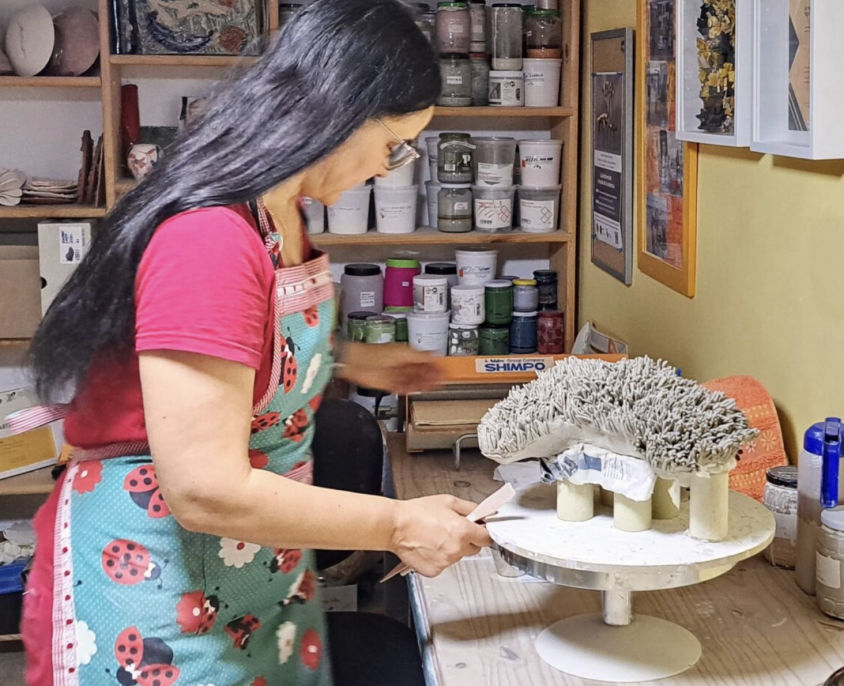STRUCTURE AND SURFACE
Returning to the tradition of previous years, the 2025 symposium will once again be organised around a central theme. This year’s guiding concept is: ‘Structures and Surfaces’. While the theme is open to free and creative interpretation, we hope to inspire works that explore form-making through structural or system- based thinking and construction. Clay, as a medium, offers exceptional possibilities for expressing such an approach—whether through abstract or functional forms.
We are particularly interested in approaches where the inherent properties of the material, the applied techniques, and distinctive surface treatments play a defining role in shaping the aesthetic and conceptual qualities of the final objects. We trust that this year’s theme will provide a rich and inspiring starting point for every invited artist and will encourage the emergence of diverse, personal artistic interpretations.
SZERKEZET ÉS FELÜLET
Visszatérve a korábbi évek hagyományaihoz, a 2025-ös szimpózium ismét egy központi téma köré szerveződik. Az idei vezérfonal: „Szerkezetek és felületek”. Bár a téma nyitott a szabad és kreatív értelmezésre, reméljük, hogy olyan alkotásokat is inspirálunk, amelyek a formaalkotást strukturális vagy rendszeralapú gondolkodásmódon és konstrukción keresztül vizsgálják. Az agyag, mint médium, kivételes lehetőségeket kínál egy ilyen megközelítés kifejezésére – legyen szó absztrakt vagy funkcionális formákról.
Különösen érdekelnek minket azok a megközelítések, ahol az anyag inherens tulajdonságai, az alkalmazott technikák és a jellegzetes felületkezelések meghatározó szerepet játszanak a végső tárgyak esztétikai és konceptuális minőségének alakításában. Bízunk benne, hogy az idei téma gazdag és inspiráló kiindulópontot biztosít minden meghívott művész számára, és ösztönzi a sokszínű, személyes művészi értelmezések megjelenését.







